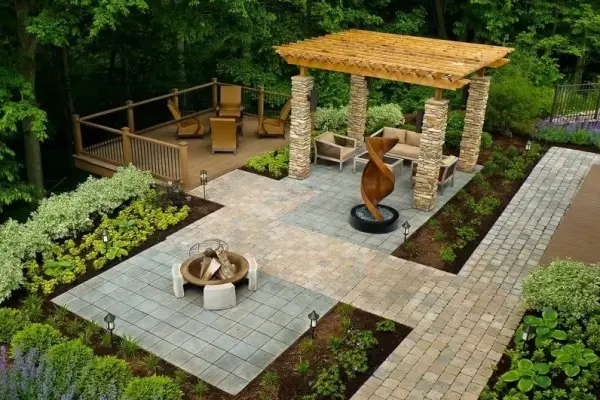Landscape architecture represents an amazing diversity of approaches to space design, where nature and human activity harmoniously combine. From traditional landscape solutions to modern garden and park art - this field unites landscape aesthetics, science, and ecology. Have you ever wondered how landscape design can transform not only architectural-landscape space but also people's quality of life?
In this comprehensive guide, we'll dive into exploring landscape architecture, examine various types and classifications of landscape styles, and learn about the principles of land development that make our cities more sustainable and attractive.
What is Landscape Architecture and Garden and Park Art?
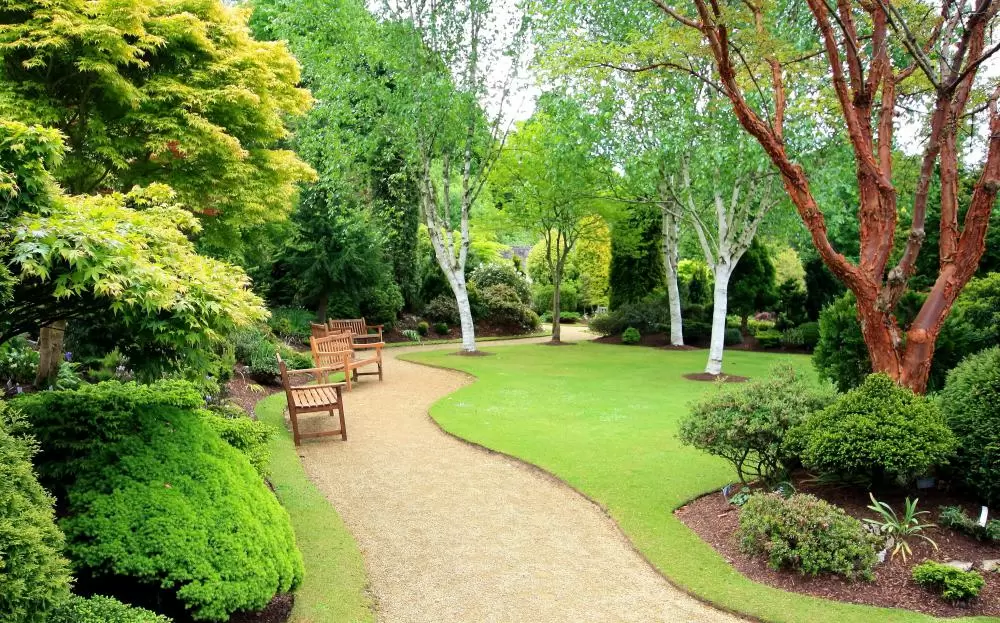
Landscape architecture is a multifaceted discipline that goes far beyond simple urban landscaping. It's a comprehensive approach to creating functional and aesthetically appealing spaces where each element serves a specific purpose. Garden and park art, as an important component of landscape design, focuses on creating harmonious interaction with nature through dendrology and plant compositions.
"A well-designed landscape is not just a beautiful picture. It's a living system that breathes, develops, and serves people. In my practice, I've seen how proper land development reduces residents' stress levels by 25-30% and increases property values in the area by 15-20%," notes Michael Richardson, a landscape specialist with 20 years of experience from Seattle.
According to research by the International Federation of Landscape Architects (IFLA), professional landscape planning contributes to:
- Reducing temperatures in cities by 2-8°C
- Improving air quality by 25-30%
- Preserving biodiversity in urbanized areas
- Increasing the psychological comfort of the population
These benefits make landscape architecture an indispensable tool in creating sustainable cities. According to Knight Frank, quality landscape design increases property values by 5-20% depending on the scale and quality of implementation.
Iconic Projects of World Landscape Architecture
Before diving into the types of landscape architecture, let's consider several revolutionary projects that changed the perception of urban spaces:
High Line, New York (2009-2019) - transformation of an abandoned railroad overpass into a 2.3 km linear park. The $152 million project attracts over 8 million visitors annually and increased property values in the area by 103%.
Gardens by the Bay, Singapore (2012) - a futuristic park covering 101 hectares with artificial supertrees. Investments totaled $1 billion, the park generates $170 million in annual revenue and contributes to temperature reduction in the area by 2°C.
Bosco Verticale, Milan (2014) - vertical forest consisting of two residential towers with 900 trees and 20,000 plants. The project absorbs 30 tons of CO2 annually and reduces building energy consumption by 30%.
Landscape Typology and Main Design Styles
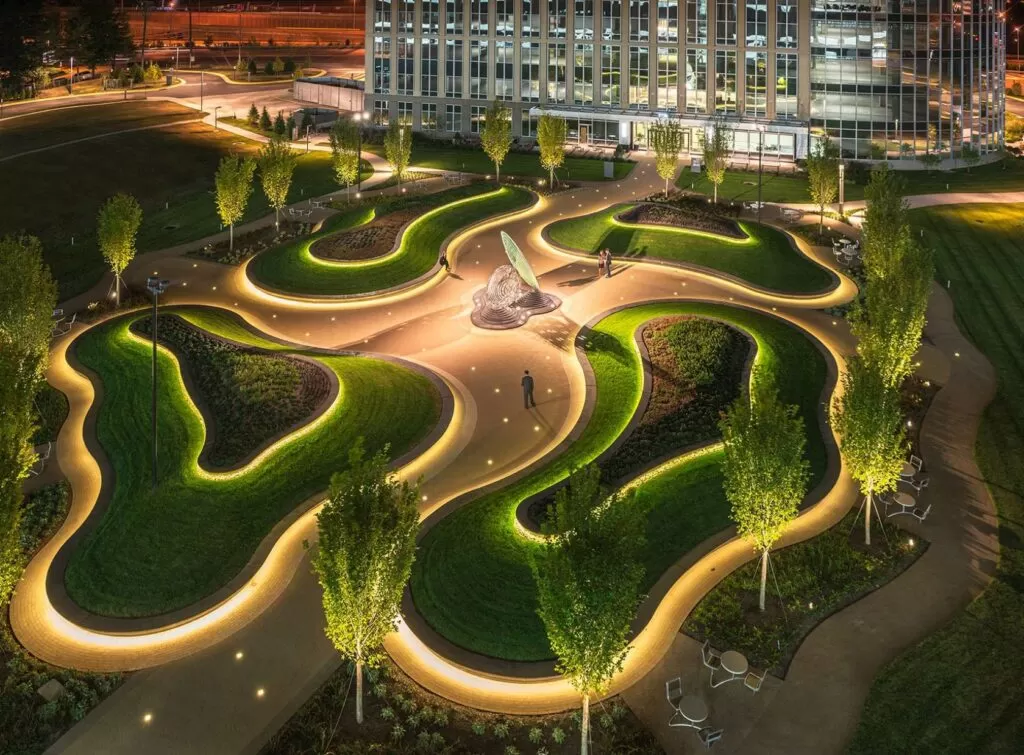
The diversity of landscape architecture manifests in numerous approaches and directions. Let's examine the main landscape typology and classification of landscape styles that form modern landscape diversity:
1. Site Planning and Functional Territory Zoning
This type of garden and park art focuses on analyzing the landscape environment and creating optimal spatial structure. Landscape specialists consider topography, natural elements, and existing infrastructure. In northern regions, special attention is paid to wind protection and maximum use of sunlight, while in southern climate zones, priority is given to creating shade and cooling the space. Geoplastics plays a key role in forming the site's microclimate.
2. Urban Design and Urban Area Landscaping
Urban landscape design includes designing public spaces, park zones, and creating the city's ecological framework. According to UN data, by 2050 more than 68% of the population will live in cities, making sustainable urban development critically important. Integration of buildings with landscape becomes a key aspect of modern urban planning.
"In our central park reconstruction project in Denver, we used ecological architecture principles, which increased visitation by 40% and created habitat for 25 new bird species. Creating eco-parks requires deep understanding of the local ecosystem," shares experience Sara Thompson, project manager at Green Urban Solutions.
3. Ecological Planning and Environmental Protection Sphere
The landscape-ecological approach becomes increasingly important in the context of climate change. Creating an ecologically favorable environment includes restoring natural ecosystems and minimizing anthropogenic impact. The environmental protection sphere in landscape design aims to preserve biodiversity and create sustainable ecosystems.
Comparative table of different approaches in landscape architecture will help better understand their features and applications:
| Type of Landscape Architecture | Main Characteristics | Application Examples | Ecological Effect |
|---|---|---|---|
| Traditional Approach | Focus on aesthetics, symmetry, formal gardens | Versailles gardens, English parks | Medium (20-30% native plants) |
| Ecological Approach | Minimal intervention, native plants, sustainability | Eco-parks, rain gardens | High (70-90% native species) |
| Urban Design | Functionality, accessibility, urbanism | Squares, gardens, boulevards | Medium (40-50% green zones) |
| Cultural Landscape | Heritage preservation, historical context | Historical parks, memorials | Varies (30-60%) |
This classification helps specialists choose the optimal approach for each specific project.
4. Parks and Recreation Zones
Creating park zones and recreational spaces is a key element of park and garden improvement. Research shows that access to quality green spaces increases the population's physical activity by 48% and reduces depression risk by 30%. Modern traditional landscape solutions combine with innovative approaches to nature aestheticization.
5. Cultural Heritage Preservation
Cultural landscapes represent a unique combination of natural and cultural heritage. Integration of historical elements with modern solutions creates a unique identity of the place. Reconstruction of landscape objects of historical significance requires deep understanding of historical landscape architecture concepts.
John MacKenzie, historical landscape restoration specialist, shares: "When restoring an 18th-century garden in Charleston, we faced a dilemma: preserve historical authenticity or adapt to modern climate conditions. The solution was found in using historical design principles with drought-resistant native plants. The result exceeded expectations - visitation increased by 60%, and maintenance costs decreased by 40%. Cultural landscapes require a special approach to design."
Research Methods and Analysis in Landscape Design
Modern landscape research methods include using GIS technologies, drones for aerial photography, and 3D modeling. Visualization of landscape projects allows clients to see the future result even at the landscape plan development stage.
Key analysis tools include:
- Topographic analysis and terrain study
- Site microclimate research
- Territory biodiversity assessment
- Analysis of water features in the landscape
- Study of soil conditions
Comprehensive application of these methods ensures creating projects perfectly adapted to local conditions.
Principles of Sustainable Landscape Design
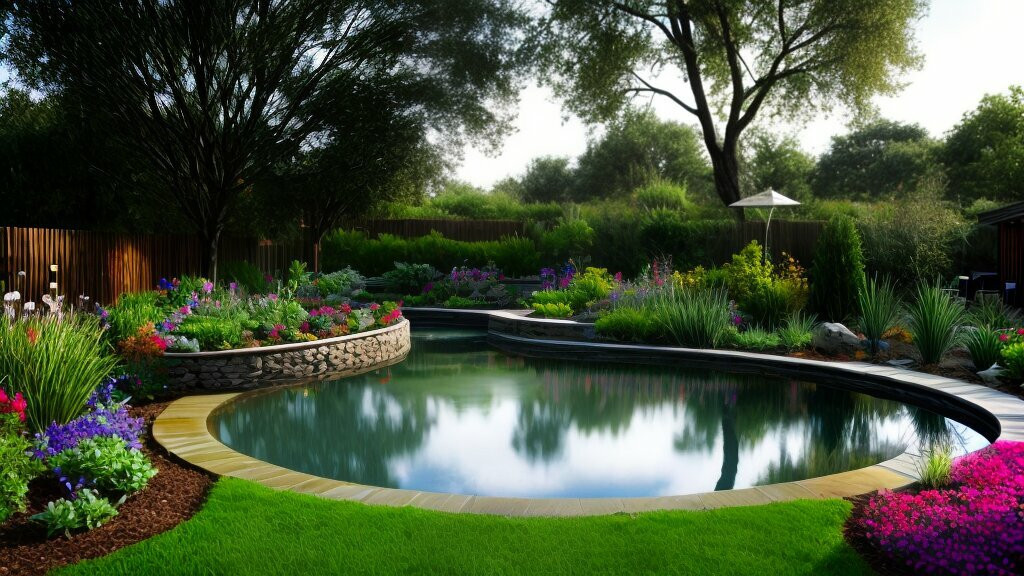 Modern ecological architecture is based on sustainable development principles. Can we create beautiful spaces without harming the environment? Absolutely!
Modern ecological architecture is based on sustainable development principles. Can we create beautiful spaces without harming the environment? Absolutely!
Key principles include:
- Using native plants: Reduces watering needs by 50-75% and creates natural habitat for local fauna. Dendrology helps select optimal plant compositions.
- Stormwater management: Rain gardens and bioswales help filter up to 90% of runoff pollutants. Water features in the landscape become part of the ecological system.
- Creating microclimatic zones: Proper plant placement can reduce building energy costs by 25%. Site geoplastics influences microclimate formation.
- Maintenance minimization: Proper garden plant selection reduces maintenance costs by 30-40%.
Small Architectural Forms and Design Elements
Small architectural forms play an important role in creating unique space character. From benches and lighting to fountains and sculptures - these elements create a comfortable environment for people.
Modern trends include:
- Using recycled materials
- Smart technology integration
- Modular constructions
- Biophilic design
These innovative approaches allow creating more functional and ecological spaces.
Global Trends and the Future of Landscape Architecture
According to expert forecasts, the global landscape design services market will reach $120 billion by 2025. The U.S. Bureau of Labor Statistics predicts 5% employment growth in landscape design by 2033. Main growth drivers:
- Urbanization and the need for green spaces
- Climate change and city adaptation
- Growing awareness of biodiversity importance
- Technological innovations in design
These trends open new opportunities for industry professionals.
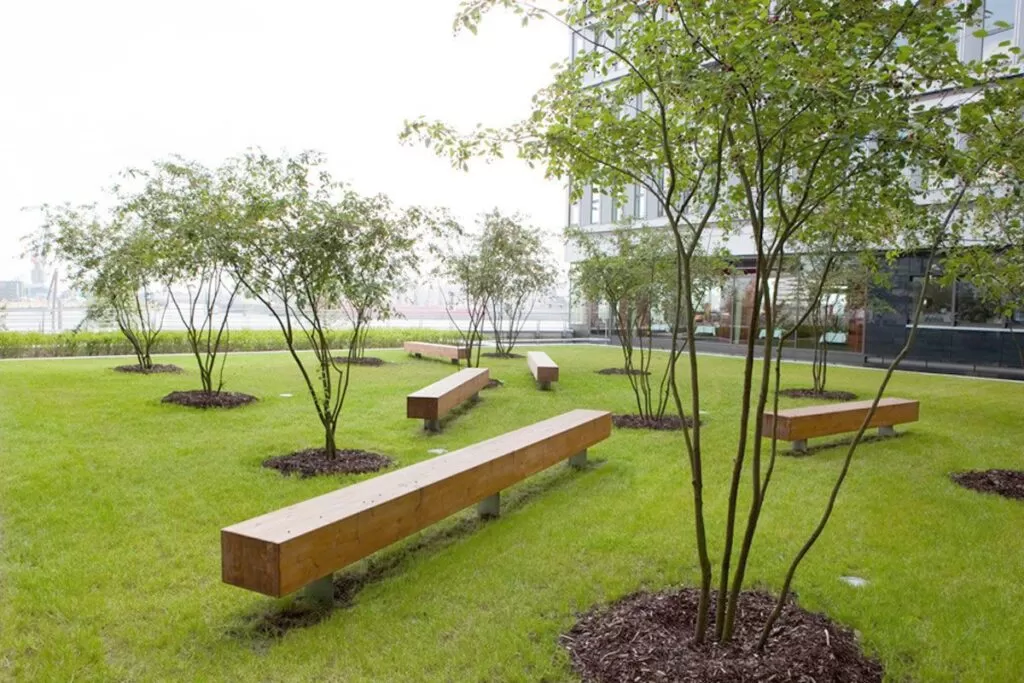
Where to Start Your Landscape Project: Step-by-Step Guide
Starting a landscape project can seem like a daunting task. Here's a simple action plan for property owners:
- Site assessment - determine size, topography, soil type, climate conditions, and existing vegetation.
- Goal definition - decide what's important: relaxation, growing plants, playground, or all together.
- Budgeting - allocate 5-10% of home value for landscape or calculate $50-200 per m² of site.
- Concept creation - draw a sketch or use online planners to visualize ideas.
- Specialist selection - use the checklist below to find a suitable professional.
Landscape Architect Selection Checklist
When choosing a specialist, pay attention to the following criteria:
- ☐ Professional education and certifications
- ☐ Portfolio with projects similar in scale and style
- ☐ Client reviews and recommendations
- ☐ Experience working in your climate region
- ☐ Clear understanding of your budget
- ☐ Willingness to provide detailed estimate
- ☐ Knowledge of local building codes and regulations
- ☐ Professional liability insurance
- ☐ Realistic project completion timelines
- ☐ Guarantees for completed work and landscape architect services
Common Mistakes in Landscape Design
Avoiding common mistakes will save time and money:
- Ignoring climate - choosing unsuitable plants leads to their death and additional costs. Solution: use native plant species.
- Lack of drainage - leads to waterlogging and plant death. Solution: plan drainage system at design stage.
- Wrong scale - too large or small elements disrupt harmony. Solution: use rule of thirds and golden ratio.
- Element oversaturation - creates visual chaos. Solution: follow the "less is more" principle.
- No maintenance plan - leads to garden neglect. Solution: choose plants considering maintenance time.
Economics of Landscape Projects: Numbers and Facts
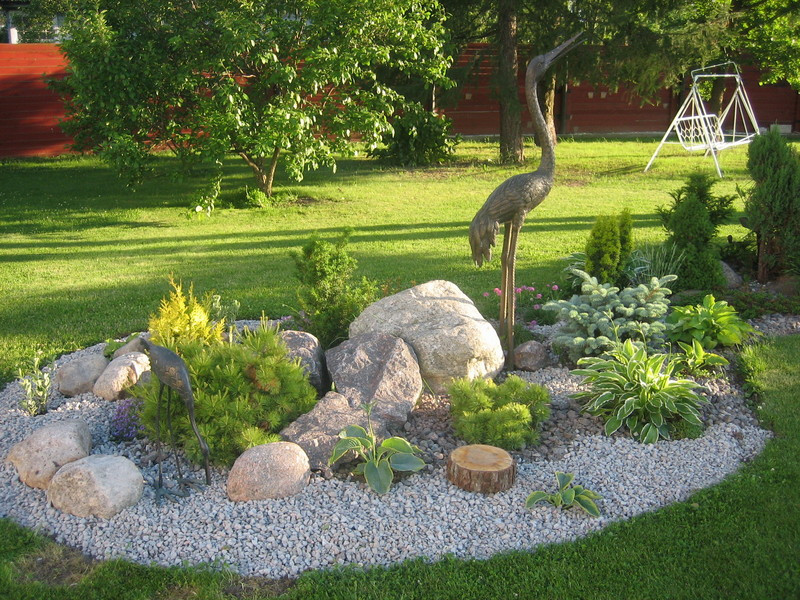 Understanding the financial side will help properly plan the budget. Landscape design cost and land development price vary depending on region and project complexity:
Understanding the financial side will help properly plan the budget. Landscape design cost and land development price vary depending on region and project complexity:
Comparative table of different landscape project costs:
| Project Type | Cost per m² | Implementation Time | ROI (Return on Investment) |
|---|---|---|---|
| Basic landscaping | $30-50 | 1-2 weeks | 100-150% |
| Medium level | $50-100 | 2-4 weeks | 150-200% |
| Premium design | $100-200 | 1-3 months | 200-300% |
| Turnkey landscape design | $200+ | 3-6 months | 250-400% |
*Data based on American Society of Landscape Architects (ASLA) research
Conclusion
Exploring the diversity of landscape architecture shows that this field is at the intersection of art, science, and ecology. From traditional landscape solutions to innovative approaches - each project contributes to creating a more sustainable and beautiful world.
Landscape design continues to evolve, responding to modern challenges. Integration of technologies, environmental care, and attention to people's needs make this profession one of the most important in the 21st century. Whether it's a small private garden or large-scale land development - every decision matters for creating a better future.
Want to learn more about specific aspects of garden and park art or start your project? Professional landscape architecture consultations will help bring your ideas to life, creating spaces that will delight many generations. Landscape design services are available for projects of any scale and budget.
